How to Choose the Right Lumber for Your Project
- August 16, 2024
- 0 comment
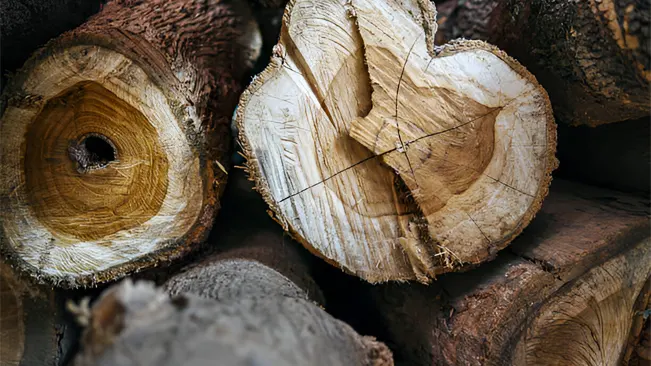
Selecting the appropriate lumber is crucial for the success and longevity of any woodworking project. The type of wood you choose can significantly impact the durability, appearance, and overall quality of your finished piece. Different types of lumber have unique characteristics, such as grain patterns, density, and resistance to environmental factors, which can influence how well your project performs over time.
Additionally, understanding the specific needs of your project such as whether it will be indoors or outdoors, the desired aesthetic, and your budget will guide you in making the best choice. By considering these factors, you can ensure that your selected lumber not only meets your functional requirements but also enhances the overall beauty and integrity of your work.
Define Your Woodworking Project
Before embarking on your lumber selection journey, it is essential to clearly define the scope and objectives of your woodworking project. Consider the following questions to help you narrow down your options:
- What is the primary purpose of the project?
Will it be a piece of furniture, an outdoor structure, a decorative art piece, or something else entirely? Understanding the intended use of your project will guide you towards the most suitable wood type. - Will the project be exposed to the elements?
If your project will be placed outdoors, you will need to choose weather-resistant wood that can withstand the effects of sun, rain, and temperature fluctuations. Indoor projects offer more flexibility in terms of wood selection. - What is your budget?
Determine how much you are willing to spend on lumber, as this will narrow down your options and help you prioritize your needs. Keep in mind that higher-quality woods may come with a higher price tag. - What is the desired aesthetic?
Consider the overall look and feel you want to achieve with your project. Do you prefer a rustic, natural appearance or a more refined, polished finish? This will help you choose the appropriate wood grain and species.
By clearly defining your project’s purpose, location, budget, and desired aesthetic, you can make an informed decision when selecting the right lumber.
Types of Wood Grains
Wood grain is a crucial factor to consider when choosing lumber, as it affects both the appearance and finish of your project. There are two main types of wood grains:
Open Grain
Woods like oak, ash, and hickory have larger pores, resulting in a more pronounced and textured grain pattern. This type of grain is ideal for projects where a rugged, rustic appearance is desired, such as farmhouse-style furniture or outdoor structures.
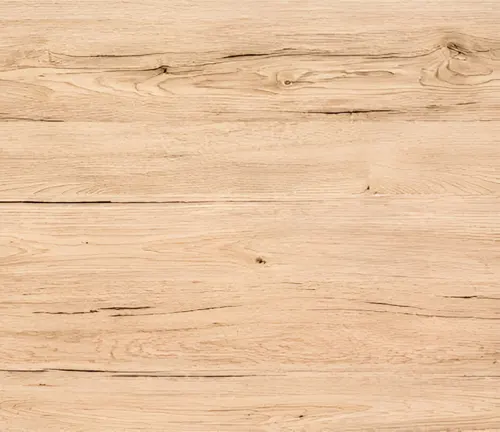
Closed Grain
Woods such as maple, cherry, and birch have finer pores, creating a smoother surface. Closed-grain woods are better suited for projects that will be painted or stained, as they require fewer coats to achieve a polished look. They are also ideal for projects where a more refined aesthetic is preferred, such as fine furniture or cabinetry.

Understanding the differences in wood grain can help you select the most appropriate lumber for your project’s desired appearance and finish.
Types of Wood and Their Density
Lumber is categorized into two main types: hardwoods and softwoods. Each type has its own unique characteristics and is suitable for different applications.

- Hardwoods:
Examples of hardwoods include oak, maple, cherry, walnut, and mahogany. These woods are generally denser, harder, and more durable than softwoods. Hardwoods are ideal for projects that require strength, stability, and resistance to wear and tear, such as furniture, flooring, and high-end cabinetry. However, hardwoods tend to be more expensive and may require specialized tools for cutting and shaping. - Softwoods:
Examples of softwoods include pine, cedar, fir, and spruce. These woods are generally lighter in weight, easier to work with, and more affordable than hardwoods. Softwoods are suitable for construction projects, such as framing, decking, and outdoor structures. While softwoods may not be as durable as hardwoods, they can be treated with preservatives to enhance their resistance to moisture, insects, and decay.
Understanding the differences in density and durability between hardwoods and softwoods will help you select the most appropriate lumber for your project’s specific requirements.
Consider the Grade of the Lumber
Lumber is graded based on appearance, strength, and structural properties. The grading system typically includes the following categories:
- Select Grade:
This is the highest quality grade, with minimal imperfections such as knots, splits, or discoloration. Select grade lumber is ideal for projects where the wood will be prominently displayed, such as fine furniture or architectural millwork. It is more expensive but offers a superior appearance and quality. - Common Grade:
This grade is more affordable and has more visible imperfections, such as knots, splits, and discoloration. Common grade lumber is suitable for projects where the wood will not be prominently displayed, such as framing, sheathing, or projects that will be painted or stained. - Appearance Grade:
This grade falls between Select and Common, offering a balance of quality and affordability. Appearance grade lumber is suitable for projects where the wood will be visible but not the primary focus, such as shelving, trim, or accent pieces.
Knowing the grade of the lumber helps ensure you choose the right quality for your project’s specific needs and budget.
Popular Wood Types for Projects
Here are some of the most commonly used wood types and their best applications:

Oak: Oak is a strong, durable hardwood that is popular for furniture, flooring, and cabinetry. It has a distinctive grain pattern and is resistant to moisture, making it suitable for both indoor and outdoor projects.
Maple: Maple is a light-colored hardwood that is easy to work with and maintain. It is commonly used for furniture, cabinetry, and flooring. Maple can also be stained to mimic the appearance of darker woods.
Pine: Pine is an affordable softwood that is versatile and easy to work with. It is commonly used for furniture, construction, and outdoor projects. While pine is not as durable as hardwoods, it can be treated with preservatives to enhance its resistance to moisture and decay.
Cedar: Cedar is a softwood that is naturally resistant to decay, insects, and moisture. It is commonly used for outdoor projects such as decking, fencing, and siding. Cedar has a distinctive aroma and a warm, reddish-brown color.
Cherry: Cherry is a hardwood that is known for its beautiful grain pattern and rich, reddish-brown color. It is commonly used for fine furniture, cabinetry, and architectural millwork. Cherry ages well and develops a warm patina over time.
Selecting the right type of wood based on your project’s specific requirements will enhance both its functionality and appearance.
Finishing Touches and Treatments
After selecting your lumber, consider how you will finish and protect it. Different woods may require specific treatments to enhance their appearance and protect against moisture, UV rays, and wear. Here are some tips:
- Staining:
Most hardwoods can be stained to enhance their appearance and create a desired color or tone. Softwoods, such as pine, can also be stained, but may require more preparation and a greater number of coats to achieve an even finish. - Sealing:
Use a sealant or finish to protect your project against moisture, especially for outdoor projects. Water-based polyurethane and lacquer are popular choices for indoor projects, while oil-based sealants and weatherproofing treatments are better suited for outdoor use. - Regular Maintenance:
Depending on the wood type and its intended use, regular maintenance may be necessary to keep your project looking its best. This may include cleaning, reapplying sealants, or addressing any wear and tear that occurs over time.
By considering these finishing touches and treatments, you can ensure that your project remains beautiful, functional, and protected for years to come.
Conclusion
In conclusion, choosing the right lumber for your project involves understanding your specific needs, the types of wood available, and how they will perform in your intended application. By following these guidelines and considering factors such as grain, density, grade, and finishing requirements, you can confidently select the best lumber for your woodworking endeavors. Remember, investing time in selecting the right lumber will pay off in the long run, ensuring that your project is both beautiful and durable.
Frequently Asked Questions
1. What is the difference between hardwood and softwood?
Hardwoods come from deciduous trees and are generally denser and more durable, making them suitable for furniture and flooring. Softwoods come from coniferous trees and are typically lighter, easier to work with, and more affordable, making them ideal for construction and outdoor projects.
2. How do I determine the right type of wood for my project?
Consider the project’s purpose (indoor vs. outdoor), desired aesthetic, budget, and required durability. Research different wood species and their characteristics to find the best match for your needs.
3. What are the different grades of lumber, and why do they matter?
Lumber is graded based on quality and appearance. Select grade has minimal imperfections and is ideal for visible projects, while common grade may have more knots and blemishes, making it suitable for hidden applications. Choosing the right grade affects the overall look and durability of your project.
4. Can I use softwood for outdoor projects?
Yes, but softwoods like pine should be treated with preservatives to enhance their resistance to moisture and decay. Cedar and redwood are naturally more resistant to the elements and are excellent choices for outdoor use.
5. How do I finish and protect my lumber?
Finishing options include staining, sealing, and applying protective coatings. Choose a finish that complements the wood type and intended use. For outdoor projects, use weatherproof sealants, while indoor projects may benefit from water-based finishes.
6. What is wood grain, and how does it affect my project?
Wood grain refers to the pattern and texture of the wood’s surface. Open grain woods have larger pores and a more textured appearance, while closed grain woods have a smoother surface. The grain type affects the final look and how well the wood accepts stains and finishes.
7. How can I ensure the lumber I choose is sustainable?
Look for lumber certified by organizations like the Forest Stewardship Council (FSC) or the Sustainable Forestry Initiative (SFI). These certifications indicate that the wood comes from responsibly managed forests.
8. What is the best way to store lumber before use?
Store lumber in a dry, well-ventilated area, away from direct sunlight and moisture. Stack the boards flat and use spacers to allow air circulation, preventing warping or mold growth.
9. How do I know if the lumber is dry enough for my project?
Check the moisture content of the wood using a moisture meter. For most projects, a moisture content of 6-8% is ideal for indoor use, while outdoor projects may tolerate slightly higher levels.
10. What tools do I need to work with lumber?
Basic woodworking tools include a saw (hand saw or power saw), measuring tape, square, drill, sandpaper, and clamps. Depending on your project, you may also need specialized tools like routers or planers.
We hope this guide on choosing the right lumber for your project has provided you with valuable insights to make informed decisions in your woodworking endeavors. Whether you’re crafting furniture, building outdoor structures, or creating decorative pieces, understanding the types of wood and their characteristics is essential.
If you have experiences or tips related to selecting lumber, please share them in the comments below. Your input can help others in the woodworking community. Also, don’t forget to share this article with fellow woodworkers and enthusiasts to spread knowledge about this important aspect of the craft. Happy woodworking!


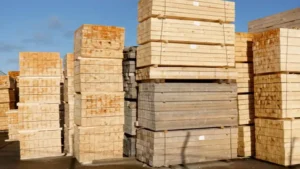

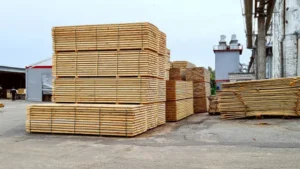


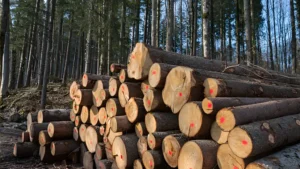
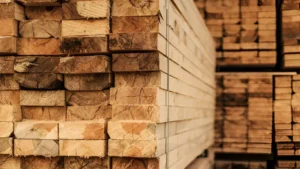
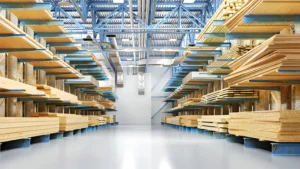

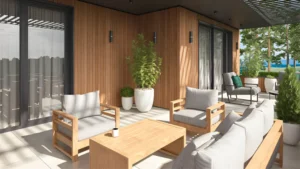

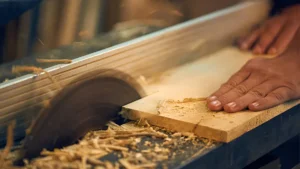
Leave your comment